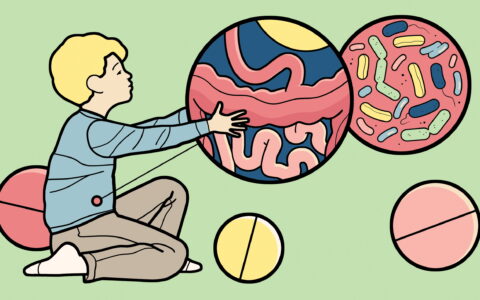Researchers investigating a widely used suicide risk-assessment scale for young people on the spectrum found it to be less reliable for that population than the general public. Study results were recently published in Autism.
The study examined the Columbia Suicide Severity Rating Scale, which is an interview that involves a verbal exchange between a caregiver and the youngster. The researchers also tested another risk-measurement tool, a self-report using either paper or a tablet.
“Ours was the first study to use two different assessments to understand suicidal thoughts and behaviors in this young cohort,” said Jessica Schwartzman, Ph.D., a coauthor and an assistant professor of psychiatry and behavioral sciences at Vanderbilt University Medical Center.
Used, Not Validated
Prior to this study, the Columbia scale had been used often with autistic people but had never been carefully validated for such use, say the researchers.
“We found that a portion of autistic youth endorsed feeling suicidal on a self-report questionnaire but not when talking to a clinician – nearly one in five of these youngsters,” said senior author Blythe Corbett, Ph.D., a professor of psychiatry and behavioral sciences at Vanderbilt. “So while the Columbia scale is important and will often identify suicidal leanings in autistic youth, some youngsters will not endorse those inclinations in the presence of a clinician.”
Thus, clinicians should keep in mind that the Columbia scale, when used alone, may be less reliable for identifying suicidal thoughts and behaviors in youth on the spectrum than it is for non-autistic youth.
“The limits of the Columbia scale may be contributing to so many autistic kids slipping through the cracks in our mental health care systems and ending up in crisis, even though suicide screening is much more widespread than it used to be,” Schwartzman said.
Beyond Parental Report
The Columbia Suicide Severity Rating scale is commonly used in health care facilities across the country with behavioral health components, Schwartzman said.
Its use may be growing, as The Joint Commission has instituted new requirements that such facilities screen for suicidality using a validated tool, and lists the Columbia Suicide Severity Rating Scale as an option.
To use the Columbia scale, a clinician asks questions about a person’s thoughts and actions and clarifies those answers with follow-up questions. Finally, the clinician uses their professional judgment to score the responder’s risk.
“We have to access kids in a way that aligns better with their communication style.”
“This socially-based approach, with clinicians asking and kids responding, may be stressful and confusing for some kids on the spectrum and might not align with their strengths. We have to access kids in a way that aligns better with their communication style,” Schwartzman said.
Corbett has also studied ways in which the physical changes of puberty unfold differently in kids on the spectrum, potentially adding to their social stress.
Methodology
The study included 239 early adolescents (157 males and 82 females, ages 10 to 14 years) living in and around Middle Tennessee. Of them, 138 were autistic and 101 were not. Most (82.8 percent) were white, with 8.9 percent multiracial, 7.9 percent Black, 6.7 percent Hispanic, and 0.4 percent Asian.
During a single visit, each youth completed the two assessments, answering the Columbia scale questions privately without a parent present. Nearly 24 percent of participant with autism reported ever having suicidal ideation, as compared to just 7 percent of non-autistic youth.
Much Higher Risk of Suicide
The prevalence rates of death through suicide among people 10 to 24 years old have risen markedly during recent decades, and for autistic youth the rates are especially high, the authors state.
“Autistic youth are a significant, at-risk group as they are more likely to experience suicidal thoughts and behaviors and to attempt suicide than their non-autistic peers,” they wrote.
Self-harm – cutting, burning, head banging – is much more common in autistic youth, even as early as 10 years of age, and self-harm is a big factor in risk of suicide, Schwartzman explained. In fact, some research suggests that autistic people are seven times as likely to attempt suicide as their non-autistic peers.
It’s worth noting that, among youth on the spectrum, not all behaviors that appear to be forms of “self-harm” are necessarily related to suicide, the authors stated. Sometimes, among youth on the spectrum, actions like head banging have other functions (such as communication).
Key Messages
Parents as well as clinicians can learn from this study when safety planning for suicidality in autism.
“When adults have these conversations with a child or teenager, the youngster realizes that these are things it’s okay to talk about.”
“In the clinic setting, there are still some care providers who are tentative about asking questions about suicide,” Corbett said. “Some people still feel that just asking might trigger some kind of poor response. But research has shown it is vital to ask youth about suicidal thoughts.”
Another important message is that clinicians should encourage parents to ask their children about their feelings and thoughts about suicide.
“When adults have these conversations with a child or teenager, the youngster realizes that these are things it’s okay to talk about,” Corbett said.
“We can’t just rely on interviews. We have to have some type of self-report, one that doesn’t require social interaction.”
Schwartzman said the study has illuminated issues surrounding screening techniques. “We can’t just rely on interviews. We have to have some type of self-report, one that doesn’t require social interaction,” Schwartzman said.






